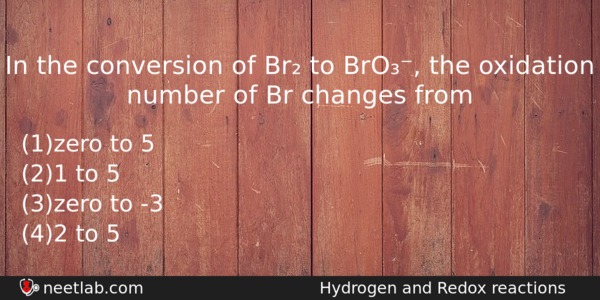| ⇦ | 
| ⇨ |
In the conversion of Br₂ to BrO₃⁻, the oxidation number of Br changes from
Options
(a) zero to 5
(b) 1 to 5
(c) zero to -3
(d) 2 to 5
Correct Answer:
zero to 5
Explanation:
Br → BrO₃⁻
Any free (unattached)element with no charge has the oxidation state of zero.
Let the Oxidation number of Br in BrO₃⁻ be x.
Hence x + 3(-2) = -1, x – 6 = -1, x -6 + 5 = -1, x = +5.
Related Questions: - In which of the following conditions a chemical reaction can not occur
- The volume of water to be added to N/2 HCl to prepare 500 cm³ of N/10 solution is
- Which of the following is not true
- The precipitation occurs if ionic product is
- The wrong statements about glycerol is
Topics: Hydrogen and Redox Reactions
(174)
Subject: Chemistry
(2512)
Important MCQs Based on Medical Entrance Examinations To Improve Your NEET Score
- In which of the following conditions a chemical reaction can not occur
- The volume of water to be added to N/2 HCl to prepare 500 cm³ of N/10 solution is
- Which of the following is not true
- The precipitation occurs if ionic product is
- The wrong statements about glycerol is
Topics: Hydrogen and Redox Reactions (174)
Subject: Chemistry (2512)
Important MCQs Based on Medical Entrance Examinations To Improve Your NEET Score
18000+ students are using NEETLab to improve their score. What about you?
Solve Previous Year MCQs, Mock Tests, Topicwise Practice Tests, Identify Weak Topics, Formula Flash cards and much more is available in NEETLab Android App to improve your NEET score.
Share this page with your friends

Leave a Reply